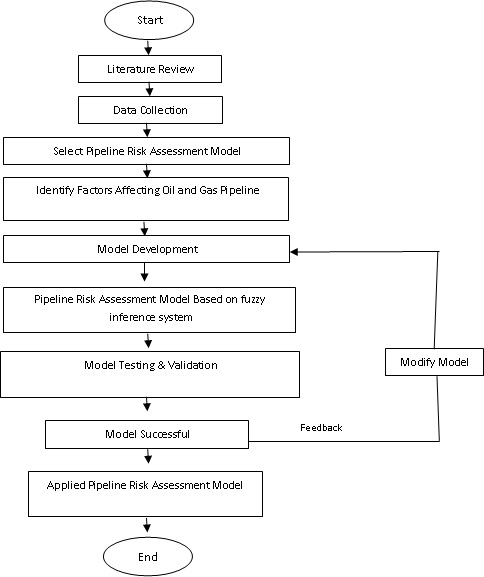Volume 13, Issue 2 (6-2023)
J Health Saf Work 2023, 13(2): 345-367 |
Back to browse issues page
Download citation:
BibTeX | RIS | EndNote | Medlars | ProCite | Reference Manager | RefWorks
Send citation to:



BibTeX | RIS | EndNote | Medlars | ProCite | Reference Manager | RefWorks
Send citation to:
Raeihagh H, Behbahaninia A, Aleagha M M. Application of the Fuzzy Inference System in Risk Assessment of Sour Gas Pipelines. J Health Saf Work 2023; 13 (2) :345-367
URL: http://jhsw.tums.ac.ir/article-1-6846-en.html
URL: http://jhsw.tums.ac.ir/article-1-6846-en.html
1- Department of Environment, Faculty of Agriculture, Roudehen Branch, Islamic Azad University, Roudehen, Iran
2- Department of Environment, Faculty of Agriculture, Roudehen Branch, Islamic Azad University, Roudehen, Iran ,behbahani@riau.ac.ir
2- Department of Environment, Faculty of Agriculture, Roudehen Branch, Islamic Azad University, Roudehen, Iran ,
Abstract: (1273 Views)
Introduction: Pipelines are widely used to transport large volumes of oil and gas over long distances. Risk assessment can help identify risk factors and create an appropriate action plan and strategy to reduce or eliminate them. The main goal of this research is to provide a method for assessing the risk of pipelines based on the Fuzzy Inference System (FIS), creating a systematic format that is expected to be a more effective, accurate, and reliable model for controlling risks related to oil and gas pipelines.
Material and Methods: In this article, fuzzy logic is used to model uncertainty and present a model for assessing pipeline risk. The Muhlbauer method, one of the most common risk assessment methods for oil and gas pipelines, has been employed to determine critical factors affecting the lines. This method has been implemented using the Mamdani algorithm and based on expert knowledge in the fuzzy logic toolbox of MATLAB software. To validate the results of the proposed model, data from the interphase pipelines of the fifth refinery of the South Pars Gas Field have been used as a study sample.
Results: The findings from the implementation of the model created in South Pars Phases 9-10 pipelines (on shore) show that the studied pipelines are divided into three parts (A, B, and C) based on indicators such as population density and equipment deployment. Part C of the pipeline has the highest risk, with third-party damage and design being the most important factors affecting it. Part B has the lowest level of risk and results in the fewest consequences for human accidents. It was also observed that corrosion is essential in increasing leakage and risk in all three pipeline parts.
Conclusion: To verify the developed model, the inter-phase shore pipe of phase 9-10 refinery in the South Pars Gas Field was considered as a case study. The findings indicate that the proposed method provides more accurate and reliable results than traditional methods. Factors such as improper operation, dispersion, receptors, leakage volume, and product risk, which are other factors affecting pipeline risk, were not considered in traditional methods. Therefore, the risk level of oil and gas pipelines can be calculated using this model as a comprehensive and intelligent tool.
Material and Methods: In this article, fuzzy logic is used to model uncertainty and present a model for assessing pipeline risk. The Muhlbauer method, one of the most common risk assessment methods for oil and gas pipelines, has been employed to determine critical factors affecting the lines. This method has been implemented using the Mamdani algorithm and based on expert knowledge in the fuzzy logic toolbox of MATLAB software. To validate the results of the proposed model, data from the interphase pipelines of the fifth refinery of the South Pars Gas Field have been used as a study sample.
Results: The findings from the implementation of the model created in South Pars Phases 9-10 pipelines (on shore) show that the studied pipelines are divided into three parts (A, B, and C) based on indicators such as population density and equipment deployment. Part C of the pipeline has the highest risk, with third-party damage and design being the most important factors affecting it. Part B has the lowest level of risk and results in the fewest consequences for human accidents. It was also observed that corrosion is essential in increasing leakage and risk in all three pipeline parts.
Conclusion: To verify the developed model, the inter-phase shore pipe of phase 9-10 refinery in the South Pars Gas Field was considered as a case study. The findings indicate that the proposed method provides more accurate and reliable results than traditional methods. Factors such as improper operation, dispersion, receptors, leakage volume, and product risk, which are other factors affecting pipeline risk, were not considered in traditional methods. Therefore, the risk level of oil and gas pipelines can be calculated using this model as a comprehensive and intelligent tool.
Type of Study: Research |
Received: 2023/06/29 | Accepted: 2023/06/22 | Published: 2023/06/22
Received: 2023/06/29 | Accepted: 2023/06/22 | Published: 2023/06/22
Send email to the article author
| Rights and permissions | |
 |
This work is licensed under a Creative Commons Attribution-NonCommercial 4.0 International License. |







